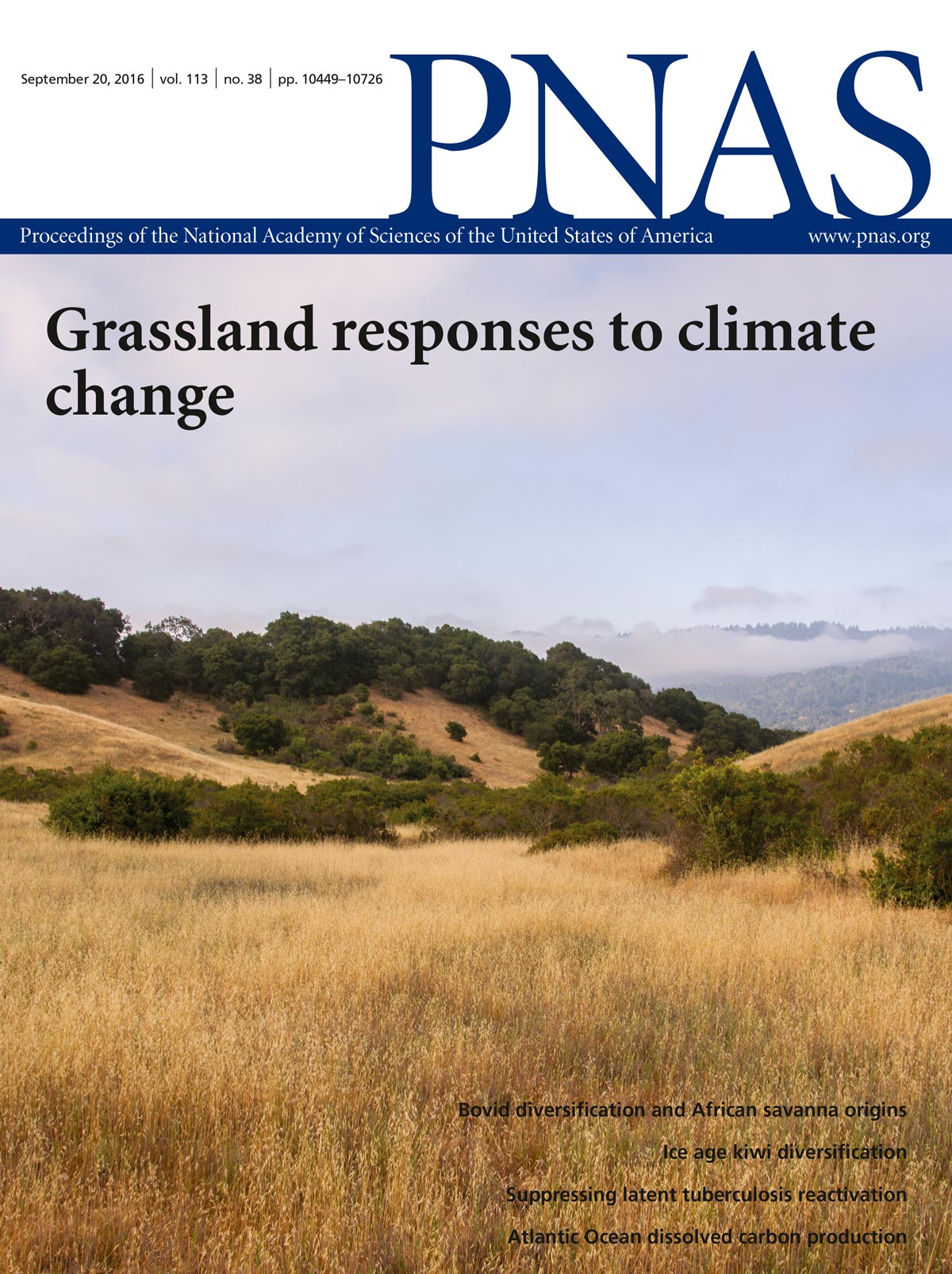Grassland paper chosen as cover in PNAS
Cover image: Pictured is grassland at the Jasper Ridge Biological Preserve in California. Over 17 years, Kai Zhu et al. subjected this grassland to changes in temperature, precipitation, carbon dioxide, and nitrogen, both individually and in combination, to determine how simultaneous changes in multiple global environmental factors would affect primary production. Primary production was a ridge-shaped function of temperature and precipitation, with peak production increasing with added nitrogen and shifting to lower temperatures with added [...]







